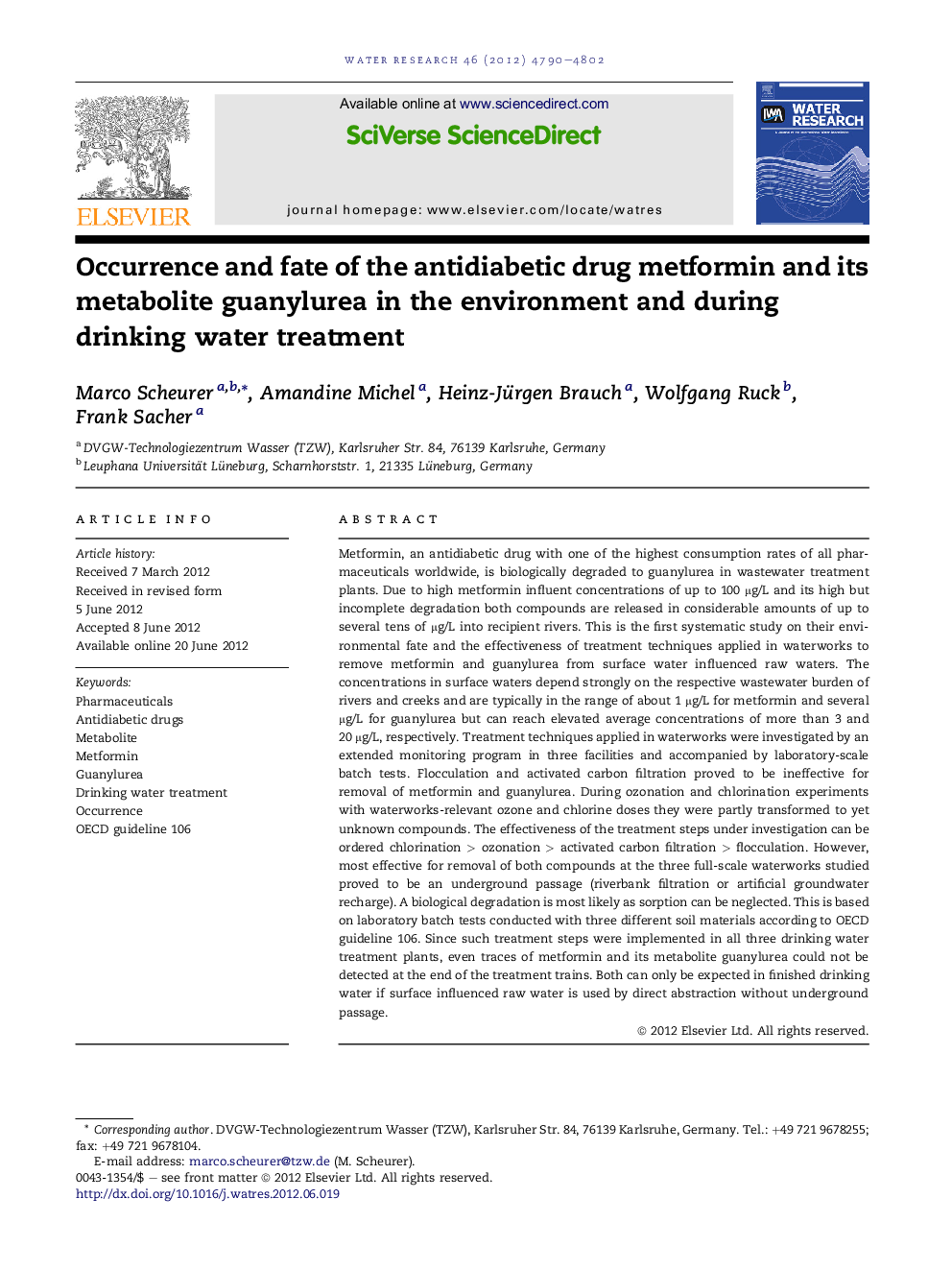| Article ID | Journal | Published Year | Pages | File Type |
|---|---|---|---|---|
| 4482999 | Water Research | 2012 | 13 Pages |
Metformin, an antidiabetic drug with one of the highest consumption rates of all pharmaceuticals worldwide, is biologically degraded to guanylurea in wastewater treatment plants. Due to high metformin influent concentrations of up to 100 μg/L and its high but incomplete degradation both compounds are released in considerable amounts of up to several tens of μg/L into recipient rivers. This is the first systematic study on their environmental fate and the effectiveness of treatment techniques applied in waterworks to remove metformin and guanylurea from surface water influenced raw waters. The concentrations in surface waters depend strongly on the respective wastewater burden of rivers and creeks and are typically in the range of about 1 μg/L for metformin and several μg/L for guanylurea but can reach elevated average concentrations of more than 3 and 20 μg/L, respectively. Treatment techniques applied in waterworks were investigated by an extended monitoring program in three facilities and accompanied by laboratory-scale batch tests. Flocculation and activated carbon filtration proved to be ineffective for removal of metformin and guanylurea. During ozonation and chlorination experiments with waterworks-relevant ozone and chlorine doses they were partly transformed to yet unknown compounds. The effectiveness of the treatment steps under investigation can be ordered chlorination > ozonation > activated carbon filtration > flocculation. However, most effective for removal of both compounds at the three full-scale waterworks studied proved to be an underground passage (riverbank filtration or artificial groundwater recharge). A biological degradation is most likely as sorption can be neglected. This is based on laboratory batch tests conducted with three different soil materials according to OECD guideline 106. Since such treatment steps were implemented in all three drinking water treatment plants, even traces of metformin and its metabolite guanylurea could not be detected at the end of the treatment trains. Both can only be expected in finished drinking water if surface influenced raw water is used by direct abstraction without underground passage.
Graphical abstractFigure optionsDownload full-size imageDownload high-quality image (366 K)Download as PowerPoint slideHighlights► Metformin is biologically transformed to guanylurea by about 90% during wastewater treatment. ► Both compounds can be detected in the μg/L-range in recipient waters. ► Ozonation and chlorination in drinking water treatment plants (DWTPs) partially remove metformin and guanylurea. ► Complete removal of metformin and guanylurea is achieved by an underground passage. ► Metformin and its metabolite could not be detected in finished drinking water of three DWTPs.
